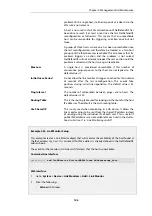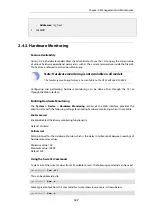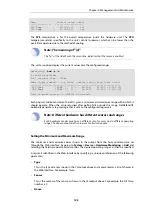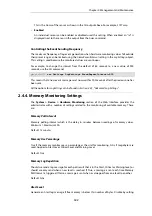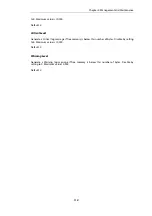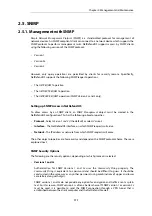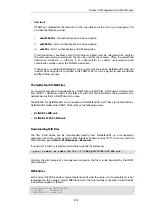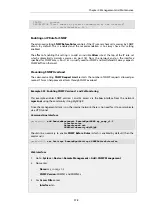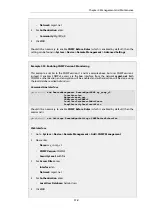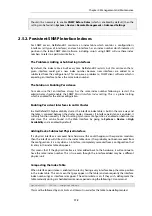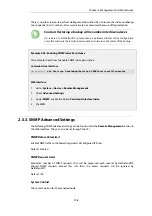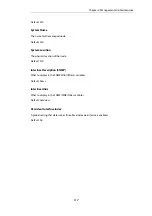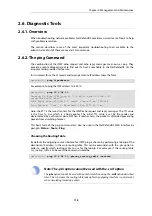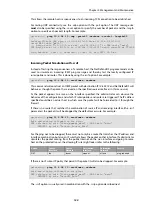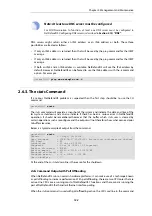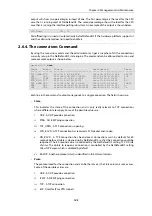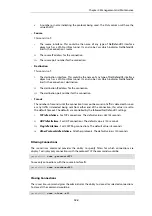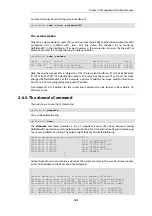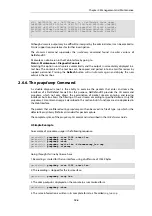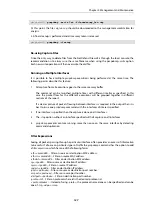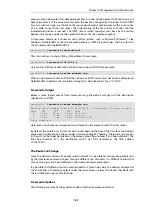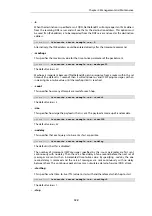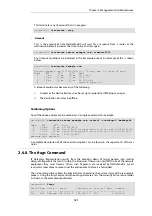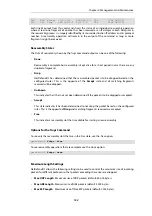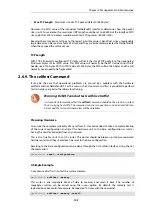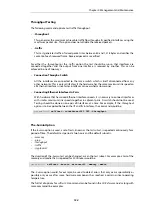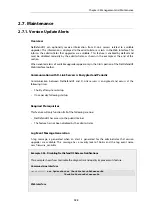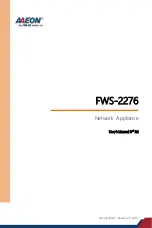
This allows the remote hosts responsiveness to an incoming TCP connection to be established.
For testing UDP connectivity, use the
-udp
option with the
-port
option. The UDP message size
must also be specified using the
-count
option to specify the number of packets and the
-length
option to specify each packet's length. For example:
gw-world:/> ping 10.6.58.10 -udp -port=53 -verbose -count=1 -length=30
Sending 30-byte UDP ping to 10.6.58.10:53 from 192.168.3.20:22307
using PBR table "main"
... using route "0.0.0.0/0 via ext, gw 192.168.3.1" in PBR table "main"
UDP Reply from 10.6.58.10:53 to :192.168.3.20:22307 seq=0 time=50 ms TTL=58
Ping Results:
Sent: 1, Received:1, Loss: 0%, Avg RTT: 50.0 ms
Incoming Packet Simulation with -srcif
Instead of testing the responsiveness of a remote host, the NetDefendOS
ping
command can be
used to simulate an incoming ICMP ping message and thereby test the locally configured IP
rules/policies and routes. This is done by using the
srcif
option. For example:
gw-world:/> ping 10.6.58.10 -srcif=wan -verbose
This command will construct an ICMP packet with destination IP
10.6.58.10
and NetDefendOS will
behave as though the packet has arrived on the specified source interface (in this case,
wan
).
As the packet appears to arrive on the interface specified, the administrator can observe the
behavior of the configuration and which IP rules/policies and routes are triggered. The IP address
specified could be an actual host in which case the packet will be forwarded to it through the
firewall.
If there is no route that matches the combination of source IP and receiving interface (the
-srcif
parameter), the packet it will be dropped by the default access rule. For example:
gw-world:/> ping 10.6.58.10 -srcif=wan -verbose
Rule and routing information for ping:
PBR selected by rule "iface_member_main" - PBR table "main"
DROPPED by rule "Default_Access_Rule"
For the ping not to be dropped, there must not only be a route that matches the IP address and
interface combination but also an IP rule that allows the packet on that interface. If administrator
simulates the packet coming from the public Internet on the
wan
interface and going to some
host on the protected
lannet
, the allowing IP rule might look similar to the following:
Action
Source
Interface
Source
Network
Destination
Interface
Destination
Network
Service
NAT
lan
lannet
wannet
all-nets
ping-inbound
If there is no IP rule or IP policy that permits the packet it will also be dropped. For example:
gw-world:/> ping 10.6.58.10 -srcif=wan -verbose
Rule and routing information for ping:
PBR selected by rule "iface_member_main" - PBR table "main"
DROPPED by rule "Default_Rule"
The
-srcif
option is usually used in combination with the
-srcip
option described next.
Chapter 2: Management and Maintenance
120
Summary of Contents for NetDefendOS
Page 30: ...Figure 1 3 Packet Flow Schematic Part III Chapter 1 NetDefendOS Overview 30 ...
Page 32: ...Chapter 1 NetDefendOS Overview 32 ...
Page 144: ...Chapter 2 Management and Maintenance 144 ...
Page 284: ...Chapter 3 Fundamentals 284 ...
Page 392: ...Chapter 4 Routing 392 ...
Page 419: ... Host 2001 DB8 1 MAC 00 90 12 13 14 15 5 Click OK Chapter 5 DHCP Services 419 ...
Page 420: ...Chapter 5 DHCP Services 420 ...
Page 573: ...Chapter 6 Security Mechanisms 573 ...
Page 607: ...Chapter 7 Address Translation 607 ...
Page 666: ...Chapter 8 User Authentication 666 ...
Page 775: ...Chapter 9 VPN 775 ...
Page 819: ...Chapter 10 Traffic Management 819 ...
Page 842: ...Chapter 11 High Availability 842 ...
Page 866: ...Default Enabled Chapter 13 Advanced Settings 866 ...
Page 879: ...Chapter 13 Advanced Settings 879 ...

